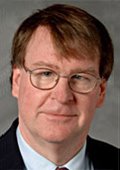SLAS2016 Short Courses
Introduction to Laboratory Automation
This course presents a broad introduction to laboratory automation in the R&D laboratory environment (i.e. non-clinical). A general understanding of a laboratory environment is helpful.
Who Should Attend
Those with little or no experience with laboratory automation, seeking an introductory overview of the topic, including:
- Scientists
- Engineers
- Lab Managers
- Marketing or Sales Professionals
- Students
How You'll Benefit From This Course
- Understand industry drivers, costs and benefits of lab automation
- Learn methods of planning and executing successful automation projects
- Appreciate the strategy and technical features that make up a successful automated system
- Become aware of up and downstream impacts of lab automation
- Develop an understanding of the issues, strategies and tools for managing data from automated systems
- Learn about current and future lab automation technologies
Course Topics
- Succeeding With Laboratory Automation: Impacting Your Organization and Tactical Strategy
- Automated Systems: Architectures, Failures and Complexity; Metrics and monitoring; Interfaces; Automated ID and Vision Systems
- Programming Automation and Managing Data: Method Building; Graphical and Automatic Programming;
- Scheduling; Build vs. Buy Strategy; Data Analysis Systems; LIMS; Data Transfer and Archival
- Automation Technologies: Current Trends and Tools
Instructors:
 |
Steven D. Hamilton, Ph.D. Steven Hamilton received a Ph.D. in Analytical Chemistry from Purdue University in 1983. He has created and led laboratory automation and informatics teams at Eli Lilly and Amgen and also worked in the technology providing sector with Scitec Inc and Hewlett Packard. Currently he is the Director of Education for SLAS. Steve was honored with the 1986 Pioneer In Laboratory Robotics Award, 1992 Scitec/TNO award and the 1999 ALA Achievement Award. He has served on the ALA Board of Directors, the Editorial Boards of Laboratory Robotics and Automation and the Journal of the Association of Laboratory Automation. He is the author or co-author of over 60 papers and abstracts. Together with his colleagues he has annually taught short courses on laboratory automation since 1993. |
 |
James M. Gill II Jay Gill leads the Applied Biotechnologies Informatics group within the Discovery Informatics and Automation department at the Bristol-Myers Squibb Company's Pharmaceutical Research Institute. Jay has more that 25 years experience developing scientifically oriented hardware and software solutions primarily for early drug discovery. The Applied Technology Informatics group supports the software needs of scientists across early discovery from Array Synthesis to Lead Evaluation. This includes management of the array synthesis, analysis and purification, registration, compound inventory, HTS and Lead Evaluation applications and databases. Our major focus is to bring together the scientists, engineers and informatics personnel to provide solutions that are optimized in the scientific, hardware and software domains. Jay began his career as a neurobiologist studying signal transduction and coding in the central nervous system, focusing on the sense of taste. |




















































